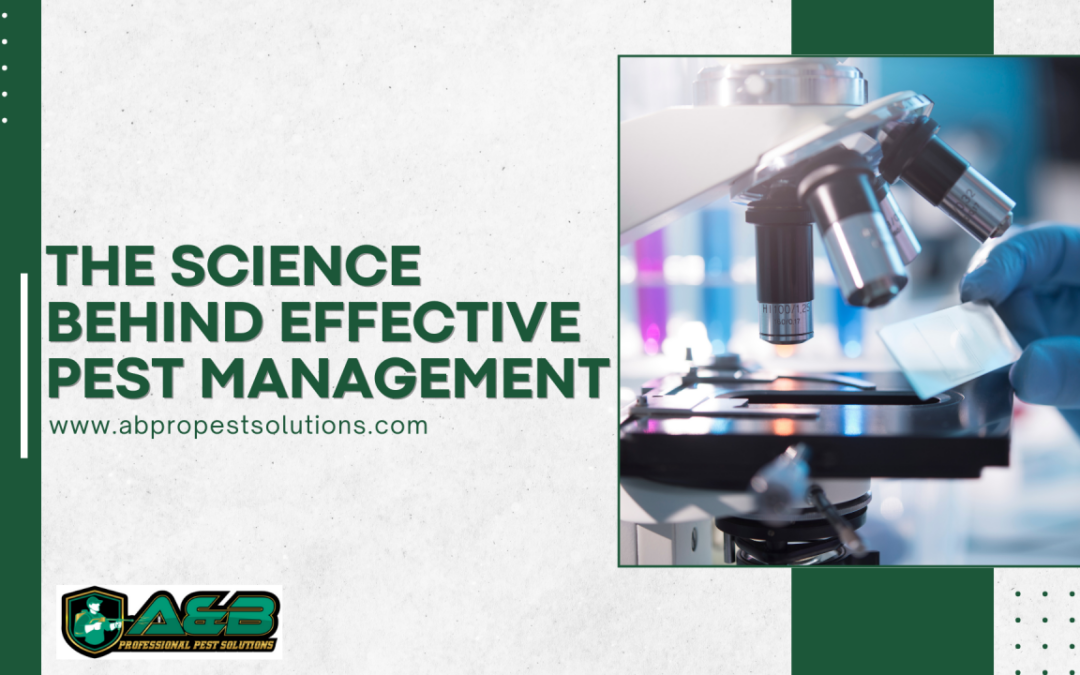Effective pest control is essential for maintaining a safe and healthy environment in homes, businesses, and agriculture. Behind every successful strategy lies a foundation of science. Let’s delve into the principles, methodologies, and innovations driving modern pest control practices.
Understanding Pest Biology and Behavior
One of the core elements of effective pest management is a thorough understanding of pests. This includes:
- Species Identification: Correctly identifying the pest species determines the most suitable control methods. For example, strategies for termites differ significantly from those for rodents or cockroaches.
- Life Cycles: Knowing a pest’s life cycle helps pinpoint vulnerable stages for intervention. For instance, targeting mosquito larvae can prevent population growth more effectively than addressing adult mosquitoes.
- Behavior Patterns: Understanding nesting habits, food sources, and activity periods allows for more precise and effective control measures.
Integrated Pest Management (IPM)
Integrated Pest Management (IPM) is a science-based approach combining multiple strategies to manage pests responsibly and sustainably. Key components include:
1. Inspection and Monitoring: Regular monitoring identifies pest problems early and evaluates control measures’ effectiveness.
2. Preventative Measures: Sealing entry points, maintaining cleanliness, and removing food and water sources make environments less hospitable to pests.
3. Chemical Control: Applying pesticides strategically and sparingly, focusing on products that target specific pests while minimizing harm to non-target organisms and the environment.
4. Cultural Practices: Changing human behaviors, like proper waste disposal and storage, to reduce pest attraction.
The Role of Environmental Science
Environmental science plays a vital role in modern pest management. By understanding ecosystems and pests’ roles within them, professionals can design sustainable strategies that minimize ecological disruption. This includes:
- Habitat Management: Creating buffer zones and encouraging biodiversity to naturally regulate pest populations.
- Risk Assessment: Evaluating the impacts of pest control measures on non-target species and the environment.
Collaboration Between Science and Practice
The science behind pest management evolves through ongoing research and collaboration among entomologists, ecologists, and pest control professionals. Staying informed about the latest findings ensures methods remain effective and sustainable.
Effective pest management combines scientific understanding with practical application. By integrating knowledge of pest biology, innovative technologies, and environmentally responsible practices, professionals can protect homes, businesses, and agricultural operations while preserving the planet’s health.
To know more about A&B’s services, please visit the A&B’s website (www.abpestsolutions.com.ph) or Facebook Page (https://www.facebook.com/ABPestSolutions/) to know more about their services. A&B also disinfects workplaces or houses to kill COVID-19 Virus.
You may also contact: +63 905 496 4550 and +63 951 062 4830
A&B Professional Pest Solutions Corporation is located at the Ground Floor of Monterey Building at Genesis St., Centro de San Lorenzo, Santa Rosa, 4026 Laguna, Philippines

